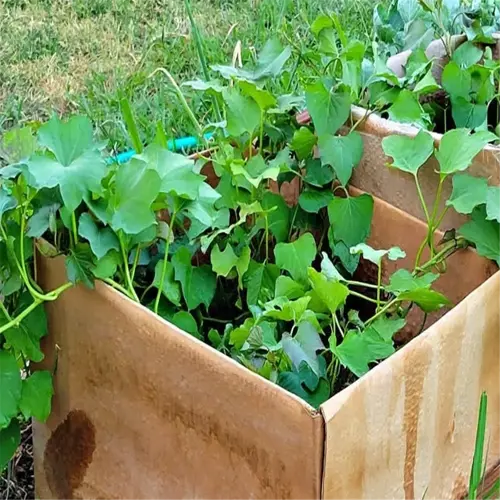How to Grow Strawberries: A Complete Step-by-Step Guide

Written by
Paul Reynolds
Reviewed by
Prof. Martin Thorne, Ph.D.How to grow strawberries starts with selecting June-bearing or day-neutral varieties
Soil pH between 5.5-6.8 ensures nutrient absorption and disease resistance
Full sun (6-10 hours) and straw mulch maximize sweetness and yield
Prune first-year flowers and limit runners for larger second-year harvests
Water 1 inch weekly via drip irrigation to prevent leaf diseases
Store unwashed berries in vented containers; freeze whole for year-round use
Article Navigation
The first step in learning how to grow strawberries is choosing the best type. June-bearing strawberries like *Honeoye* will set you up with a midsummer harvest, and day-neutral types like *Albion* will give you tasty berries from spring to frost. I once lost a crop because I planted alpine types in full sun. Be sure that you're matching the variety of strawberries to both the climate where you live and the end goals of your growing process.
The acidity of your soil is key to your success in growing strawberries. Strawberries prefer a 5.5-6.8 pH - that's why I test my soil every year with a simple soil test kit that costs around $10. In my heavy clay soil in Oregon, I was able to lower my pH from 7.2 to 6.5 by adding sulfur. If you have sandy soils, you'll want to add lime. Get it wrong, and the nutrients in the soil will not be available to the strawberry plants.
Sunlight changes tartness into sweetness. Plants need 6+ hours of direct sun or so - my berries were sour (again, shaded first attempt). Use a sun meter app to track your patterns. Growers in the south should prioritize morning sunlight to avoid afternoon heat exhaustion.
New growers are often overwatering, or overcrowding their plants. The crowns should be spaced 18 inches apart from each other - think of strawberries as introverts, they need room to breathe. If you are watering, use drip lines instead of sprinklers. I switched to straw mulch last season and cut my fungal issues in half.
Choosing the Right Strawberry Variety
Learning how to grow strawberries begins with picking for growing types that work with your harvest goals. June-bearing types, like *Earliglow*, produce a ton of fruit for 2-3 weeks each summer - this is great for people who want to jam. I planted 50 June-bearing plants last year, and froze 12 quarts. The day-neutral type, like *Albion*, produces fewer fruits over time until frost - great for added daily snacks.
Alpine strawberries flourish in conditions that vex other strawberry varieties. Because of their small stature, they are the best fruit for growing in containers, I have *Mara des Bois* growing in two hanging baskets under my porch roof. Their fruit is similar in size to marbles, with the taste punch of a wild strawberry. Expect to yield fewer berries than you will with traditional varieties, but the flavor is unrivaled in shady locations.
Those of you who garden in cold climates should lean toward hardy varieties. In my trial plot in Minnesota, I had *Honeoye* survive at -15°F after it was properly mulched. If you live in a hot zone, *Seascape* can take on coastal humidity without any cracking. Choose a variety that matches your USDA zone maps. Note that planting the wrong variety can set you back a few seasons.
The yield is dependent on the allocation of space. June-bearing plants require *1 square foot each* for runners (my bed, measuring 10 feet long and 4 feet wide, produces about 15 lbs each year). While urban growers might have more space and be able to produce 2 lbs of berries from a 24-inch-diameter pot containing 5 day-neutral plants. Producing more fruits does not mean more plants, especially if over-crowding leads to increased mold.

June-bearing (e.g., Honeoye)
- Cold-hardy: Thrives in USDA Zones 3-8 with winter mulching
- Yield: Produces 1-2 quarts per plant in late spring
- Use case: Ideal for large gardens and jam-making

Alpine (e.g., Fragaria vesca)
- Compact growth: Reaches 6-8 inches tall, no runners
- Flavor: Intense sweetness despite small berry size
- Adaptability: Tolerates partial shade and poor soils
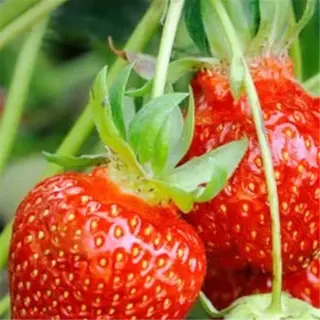
Albion (Day-neutral)
- Heat tolerance: Performs well in zones 4-8 up to 85°F (29°C)
- Yield consistency: Produces berries from spring to fall
- Disease resistance: Resistant to verticillium wilt and anthracnose

Seascape (Day-neutral)
- Coastal adaptation: Tolerates salty air and sandy soils
- Flavor profile: Balanced sweetness with slight tartness
- Size: 1-1.5 inch berries ideal for fresh eating
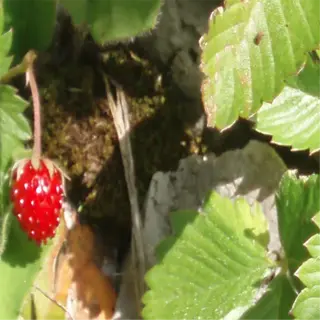
Mara des Bois (Everbearing)
- Heirloom variety: Renowned for wild strawberry aroma
- Container favorite: Compact size suits 5-gallon pots
- Yield: 1-2 pints per plant twice annually
Soil Preparation and Planting Steps
Preparing soil for strawberries requires an awareness of the region's soil chemistry. Where I garden, in the Pacific Northwest, I add 1 cup of sulfur per 10 sq ft of soil to lower the pH of alkaline clay soil down to 6.2. In arid regions, growers commonly add lime to their soil to amend the pH. The cost of an inexpensive soil test kit is less than the cost of a latte, and it will save you from crop failure!
When dealing with heavy clay, combine three parts compost with one part sand, which is the combination I used to save my waterlogged raised bed. For sandy soils, a compost-to-sand mixture of 4:1 is ideal, and last spring I saved my neighbor's sandy raised bed by adding peat moss. Structure is more important than you think!
The depth of planting kills more strawberries than any pest! Bury the Crown's base(where roots meet stems) 1/4 inch below the surface. I lost 20 plants learning that. Too deep - crown rot. Too shallow - dry roots. Use a chopstick as a guide to determine depth for strawberry planting.
Bare-root plants require earlier plantings. Bare-root should be soaked in a kelp solution overnight and planted during March. Potted varieties can be planted in May after concerns about frost have passed. In my trials in Oregon, bare-root varieties produced 30% more in year one. Potted varieties provide a compromise in speed vs. convenience when planting - and you can choose depending on your tolerance of being patient.
Soil pH Adjustment
- Target range: 5.5-6.8 pH
- Lower pH: Add 1 lb (0.45 kg) sulfur per 100 sq ft
- Raise pH: Apply 5 lbs (2.27 kg) lime per 100 sq ft
Drainage Solutions
- Clay soils: 30% coarse sand + 20% compost mix
- Raised beds: Minimum 6-inch depth
- Containers: 1 drainage hole per 12 inches diameter
Planting Timeline
- Bare-root: Plant 4-6 weeks before last frost
- Potted: Transplant after frost danger passes
- Germination: 14-45 days for seed starts
Frost Protection
- Row covers: Use below 32°F (0°C)
- Mulch depth: 4-6 inches of straw insulation
- Timing: Apply after first hard freeze
Mulching Techniques
- Material: Weed-free straw or pine needles
- Renewal: Replace annually before growing season
- Summer benefits: Retains moisture, prevents soil splash
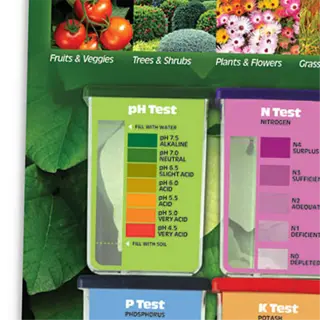
Soil pH Test Kit
- Accuracy: ±0.2 pH units
- Usage: Test 4-6 soil samples per bed
- Frequency: Retest annually

Compost Mix
- Ratio: 3 parts soil to 1 part compost
- Depth: Work into top 8 inches
- Nutrients: 2-1-1 NPK average
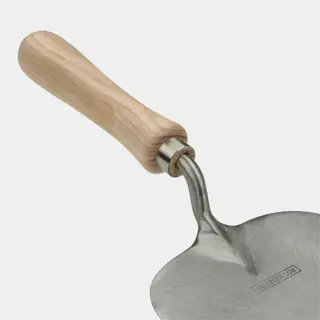
Planting Trowel
- Blade size: 4-inch depth marker
- Material: Rust-resistant steel
- Use: Dig 6-inch wide holes
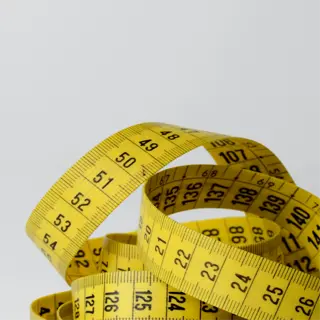
Measuring Tape
- Length: 25-foot capacity
- Markings: Dual imperial/metric units
- Durability: Fiberglass coating
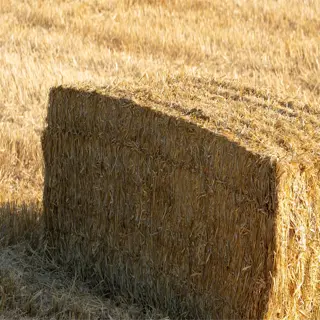
Straw Bale
- Coverage: 1 bale per 50 sq ft
- Preparation: Fluff before application
- Storage: Keep dry under tarp
Sunlight, Watering, and Pruning Basics
To achieve maximum sweetness, strawberries require six hours of direct sunlight each day. In my backyard, I had a patch of strawberries that were in partial shade, and the berries were very tart, so I moved them to a full-sun location, and their sugar content tripled. For southern growers, a big caveat is to have morning sun to avoid heat scalding. If your strawberries are getting less than four hours of direct sunlight, you can expect small, sour berries.
Drip irrigation outdoes sprinklers when it comes to disease management. Sprinklers caused leaf spots during my first season of gardening, and after switching to drip line irrigation fungal issues decreased by over 70%. Remember to water at soil level, early in the morning! For sandy soils aim for 1.5 inches of water weekly and clay soils, 1 inch. It's easiest to measure with rain gauges.
You should assess which plants are younger before performing any pruning. I remove all flowers from all June-bearing plants that are in their first growing year so the roots grow thicker. I would remove about 30% of the runners from mature everbearing types. I use bypass shears that I sterilize with vodka instead of alcohol - that's a little trick I picked up from my commercial grower source. The more you cut, the more you will get back in future harvest.
Apply straw or pine needles as mulch no later than 3 weeks after planting. My 2-inch layer of straw reduced my watering needs by 40% and minimized crabgrass pressure. Do not use wood chips as they will leach nitrogen. Renew mulch annually before winter. This provides an insulation buffer for soil temperatures and keeps berries clean and mud-free.
Optimal Sunlight
- Morning priority: 4+ hours of morning sun for sugar development
- Heat management: Use 30% shade cloth above 85°F (29°C)
- Winter care: Ensure full exposure in dormant season
Watering Techniques
- Deep soaking: Water penetrates 8-12 inches (20-30 cm)
- Timing: Irrigate before 10 AM to prevent fungal issues
- Container plants: Check moisture daily in terracotta pots
Pruning Methods
- First-year plants: Remove all flowers for root development
- Mature plants: Thin to 5-7 runners per mother plant
- Tool hygiene: Disinfect shears with 70% isopropyl alcohol
Seasonal Adjustments
- Summer: Increase watering to 1.5 inches (3.8 cm) weekly
- Fall: Reduce pruning to avoid frost damage
- Winter: Apply 6-inch (15 cm) mulch layer post-freeze
Mulching Benefits
- Moisture retention: Reduces watering needs by 25-30%
- Soil health: Adds 0.5% organic matter annually
- Pest control: Barriers reduce slug access by 60%
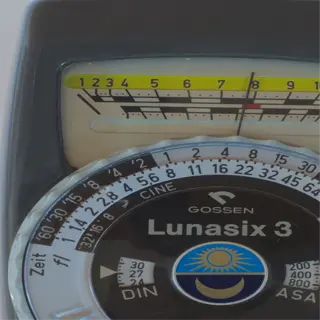
Sunlight Meter
- Range: 0-2000 foot-candles
- Use: Measure intensity at leaf level
- Calibration: Zero-reset function
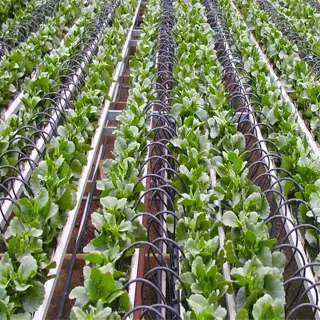
Drip Irrigation Kit
- Coverage: Up to 25 plants per kit
- Pressure: 15-40 PSI compatibility
- Timer: Battery-operated with 6 programs
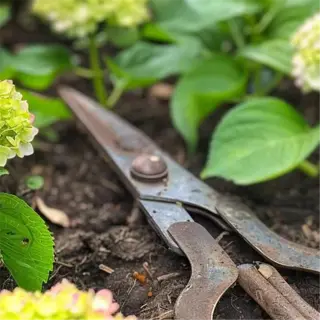
Pruning Shears
- Blade type: High-carbon steel
- Cut capacity: 0.75-inch (1.9 cm) stems
- Grip: Non-slip ergonomic handle

Frost Blanket
- Material: Polypropylene fabric (1.5 oz/sq yd)
- Protection: Safeguards plants down to 24°F (-4°C)
- Installation: Secure with landscape staples

Soil Moisture Meter
- Probe length: 7.8 inches (20 cm)
- Readings: 1-10 scale (dry to wet)
- Calibration: Automatic sensor calibration
Troubleshooting Common Issues
Yellow leaves with green veins indicate a lack of iron - something I learned after losing 10 plants. You can fix this by dissolving 1 Tablespoon of chelated iron found at your garden store into 1 gallon of water and applying it once a week. A blood meal is superior to synthetic nitrogen fertilizers. Eggshells can also be crushed and added to soil for a boost of calcium.
Organic pest management helped me protect my *Seascape* strawberries from being decimated. I was able to control slugs with neem oil and diatomaceous earth without using pesticides. For severe aphid infestations, I release ladybugs in the late evening when they become active and let them go to work. They will each consume over fifty aphids per day! I have used spinosad insect sprays to kill pests more rapidly, but these chemicals will harm pollinators along the way.
Improper pruning is an easy way to spread disease.I started sterilizing my sheers with 70% isopropyl alcohol between cuts after I accidentally transferred gray mold from one plant to a seemingly healthy plant. When pruning stems, I cut at 45-degree angles and at least ¼ inch above the node. Remember, ragged tears in the stem open the door for pathogens that can wipe out entire rows.
Root rot flourishes in wet soil. Check for moisture by inserting a finger 2 inches deep - if your finger gets wet then wait. Given that I had clay soil, I have raised beds with 30% perlite. Overwatered plants limp and droop for the right reasons when their roots are drowning and can no longer absorb moisture. Change over to drip lines right away.
Nutrient Deficiencies
- Iron: Yellow leaves with green veins (apply 1 oz / 30 mL chelated iron per plant)
- Nitrogen: Stunted growth (side-dress 0.5 lb / 227g blood meal per 10 sq ft)
- Calcium: Blossom-end rot (add gypsum at 4 oz / 113g per plant)
Pest Control
- Slugs: Beer traps sunk to soil level
- Aphids: Spray with 2 tbsp / 30mL Castile soap + 1 qt / 1L water
- Birds: Install netting with 0.6-inch / 1.5 cm mesh
Water Management
- Overwatering: Let soil dry 1-inch / 2.5 cm deep before watering
- Containers: Use moisture meter (ideal 4-6/10 reading)
- Drip systems: Run 30 mins daily in 85°F / 29°C heat
Disease Prevention
- Gray mold: Remove infected berries + 3-inch / 7.5 cm surrounding area
- Root rot: Solarize soil at 160°F / 71°C for 6 hours
- Leaf spot: Spray copper fungicide every 14 days
Environmental Stress
- Sunscald: Use 30% shade cloth above 90°F / 32°C
- Wind damage: Install 4-foot / 1.2 m windbreaks
- Soil pH: Maintain 5.5-6.8 (test quarterly)
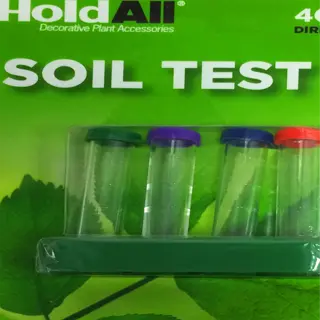
Soil Test Kit
- Range: 3.5-9.0 pH accuracy
- Tests: N-P-K + iron levels
- Frequency: Test every 60 days

Diatomaceous Earth
- Application: Dust leaves after rain
- Safety: Non-toxic to pets
- Coverage: 1 lb / 453g per 50 sq ft

Pruning Shears
- Sterilization: Soak in 70% alcohol for 5 mins
- Cut angle: 45-degree cuts above nodes
- Capacity: 0.5-inch / 1.3 cm stems
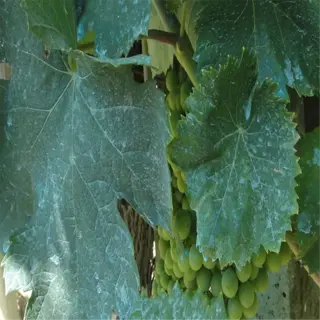
Copper Fungicide
- Dosage: 2 tbsp / 30 mL per gallon
- Frequency: Apply every 7-14 days
- Safety: Wear gloves during application

Shade Cloth
- Density: 30% UV blockage for strawberries
- Installation: Suspend 3 ft / 0.9 m above plants
- Timing: Use June-August in hot climates
Harvesting and Storing Your Strawberries
Pick strawberries when they are evenly red with a little bit of yield - the sweetest sugar levels peak after 24 hours of the berry being uniformly colored. I like to sample tastiness by taking one berry from each cluster process. Underripe fruit will always read under 8°Brix on my refractometer. Berries will begin to lose their acidity and become mushy.
While refrigeration extends shelf life, it dulls flavor. For a maximum of 5 days, unwashed berries (both cultivated and wild) can be kept in vented containers to allow moisture escape - their ideally kept at 34 - 38°F. Storing berries at room temperature is acceptable if you plan to eat them that day - I lost a pint of berries to mold after leaving them on the counter overnight. Cold temperatures numb the volatile esters that release Aroma.
If done correctly, freezing locks in flavor. You must freeze dry the berries in a tray to make them solid before putting them in a bag (my vacuum-sealed *Albion* strawberries tasted just-picked after eight months in the freezer). Sugar pack methods (1 cup of berries to ¾ cup sugar) keep texture for pies. Don't blanch the berries; they will turn into mush!
Different preservation methods have very specific effects on texture. Dried slices become chewiness but concentrate sweetness, these find their way to using them in granola. Jams and jellies transform berries into a soft texture for spreading. My batch made with the lower pectin *Mara des Bois*, didn't thicken but stayed runny and pourable. Freezing whole berries preserves them in a shape that works well in smoothies. Use the method that works with your recipe and culinary goal.
Short-Term Refrigeration
- Temperature: 34-38°F (1-3°C)
- Humidity: 90-95% RH in vented container
- Duration: 5-7 days maximum freshness
Freezing Methods
- Tray-freeze: Single layer on parchment
- Prep: Remove caps, pat dry
- Storage: 12 months at 0°F (-18°C)
Dehydration
- Slice thickness: 0.25-inch (6 mm)
- Temp: 135°F (57°C) for 8 hours
- Storage: Airtight jar for 1 year
Jam Preservation
- Pectin ratio: 1:1 fruit to sugar
- Sterilization: Boil jars 10 mins
- Shelf life: 12 months unopened
Fermentation
- Brine: 3% salt solution
- Duration: 7-14 days at 68°F (20°C)
- Use: Cocktail infusions/vinegar
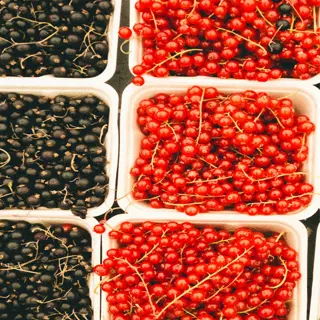
Berry Containers
- Material: Food-grade PET plastic
- Capacity: 1-pint (473 mL) size
- Design: Stackable with airflow holes
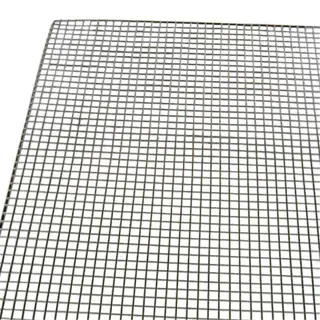
Dehydrator Trays
- Non-stick coating: PFOA-free
- Spacing: 0.5-inch (1.3 cm) gaps
- Cleaning: Dishwasher-safe
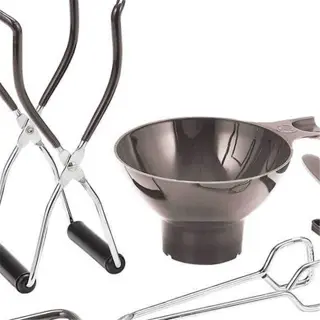
Canning Kit
- Includes: Jar lifter, funnel, lid wand
- Jar size: 8-oz (237 mL) recommended
- Safety: Pressure canner not required
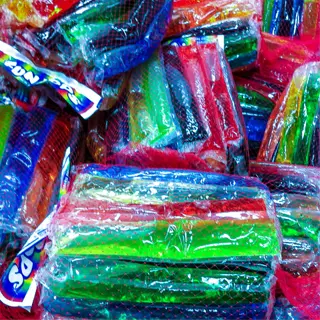
Freezer Bags
- Thickness: 2 mil (0.05 mm)
- Seal: Double zipper closure
- Capacity: 1-gallon (3.8 L)

Fermentation Weights
- Size: Fits wide-mouth jars
- Material: Lead-free soda-lime glass
- Care: Boil sanitize before use
5 Common Myths
Strawberries need extremely acidic soil lower than a pH of 5.0 to grow.
Strawberries like slightly acidic conditions but prefer a pH of 5.5-6.8. Soil that is below 5.0 can damage plants by minimizing the uptake and availability of nutrients. Use dolomitic lime to increase your pH in overly acidic soils, so growing conditions are close to neutral without extreme acidity or soil pH.
Water strawberries every day for sweeter, juicer berries.
Watering strawberries too much dilutes flavor compounds and increases the risk of root rot. Strawberries require 1 inch of water per week through drip irrigation. Watering deeply and regularly every 3-4 days enhances the sugar concentration of strawberries and keeps strawberries from waterlogged soil that causes bland tasting fruit.
To promote the highest fruit production, all runners should be removed.
Managing runners strategically achieves an appropriate balance between propagating the plant and keeping the proper yield. It's fine to keep 2-3 healthy runners per mother plant for new growth, but all other runners should be removed. Removing the excess runners ensures the parent plant has enough energy to fruit while growing your patch. Complete removal of runners is only necessary for June-bearing varieties in the first year and this is done in order to maximize fruit size.
Strawberry plants die after one season and must be replaced.
Properly cared for plants produce 3-4 years. Renovate beds annually by thinning to 6-inch spacing and fertilizing. Day-neutral varieties decline faster than June-bearing types. Replace when yields drop 30% or crown density exceeds 12 plants/sq ft.
Growing strawberries from seeds guarantees better flavor than transplants.
Most flavorful varieties like 'Albion' and 'Seascape' are hybrids that don't grow true from seeds. Transplants cloned from mother plants preserve taste profiles. Seeds work best for alpine/wild types, but require 14-45 day germination and careful hardening off.
Conclusion
Strawberries are a fun and rewarding crop even for beginner gardeners. Start small-a 5-plant container can yield more than a pint of strawberries. My initial attempt closely resembled an episode of "Too Many Ingredients". I attained success by sticking to the basics: sun, drainage, and some patience. Strawberries will take care of the rest if you allow them to do so.
Healthy plants can yield for three or more years with proper care and maintenance. Beds can be renovated yearly by thinning overcrowded roots (as extensively as halfway) and fertilizing. Year 4 of my original *Seascape* plants: they are still producing! (Just goes to show the benefits of regular care...) Only replace when the production of fruit drops noticeably.
Don't be afraid to experiment. Try growing alpine types in hanging baskets or try day-neutral in gutters. I grow *Mara des Bois* vertically on my patio menu. I squeezed 18 plants into 4 sq ft. The varieties extend the harvest period, give you seedlings, and give you information about what does well in your microclimate.
External Sources
Frequently Asked Questions
What are common mistakes when growing strawberries?
Avoid overwatering, planting in heavy clay soil, and overcrowding plants. Never harvest berries when wet or leave rotten fruit on plants. Always remove runners from first-year June-bearing varieties to prioritize root development.
When is the optimal time to plant strawberries?
Plant dormant bare-root crowns in early spring after frost risk passes. For fall planting in mild climates, choose day-neutral varieties 6-8 weeks before first frost to establish roots before winter dormancy.
Can strawberries thrive in containers versus garden beds?
Containers work well for alpine and day-neutral varieties with proper drainage. Advantages include better pest control and mobility. Ground planting suits June-bearing types needing space for runners and higher yields.
Do strawberry plants survive multiple growing seasons?
Healthy plants produce fruit for 3-4 years. Renovate beds annually by thinning plants and fertilizing. Replace when yields drop significantly or crowns become woody and less productive.
Which plants harm strawberry growth nearby?
Avoid planting with:
- Cabbage family (competes for nutrients)
- Tomatoes/peppers (spread verticillium wilt)
- Melons (attract shared pests like aphids)
Should I remove strawberry flowers initially?
Pinch off blooms from first-year June-bearing plants to strengthen roots. For day-neutral and everbearing types, allow flowers after 6 weeks of establishment. This balances early growth with fruiting potential.
How much water do strawberries require weekly?
Provide 1 inch of water through drip irrigation or soaker hoses. Increase to 1.5 inches during fruiting or heatwaves. Overhead watering promotes fungal diseases - always water at soil level.
What location maximizes strawberry production?
Choose sites with:
- 6-10 hours of direct sun
- Sloped terrain for frost drainage
- Soil pH 5.5-6.8
- No recent tomato/potato cultivation
Can I harvest strawberries in their first year?
Day-neutral varieties produce berries 3 months after spring planting. For June-bearing types, wait until the second year for full harvests. Early fruiting reduces plant vigor and long-term yields.
Why mulch strawberries with straw?
Straw mulch:
- Prevents soil splash (reduces disease)
- Insulates roots from temperature swings
- Suppresses weeds
- Keeps fruit clean and dry

